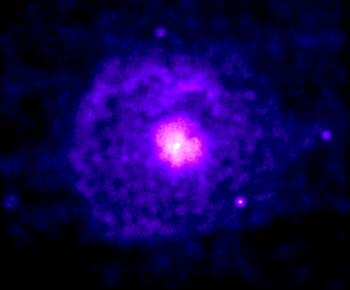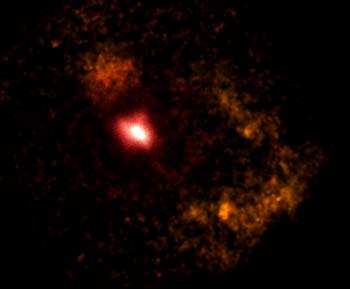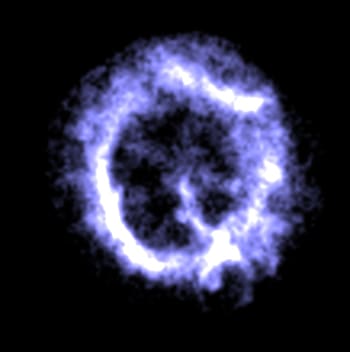The Chandra X-ray observatory has revealed previously unobserved features in the remnants of three supernova explosions. Two of the images show the enormous shell structures produced by the explosions, as well as the vast quantities of energetic particles emitted by a rapidly rotating neutron star at the remnant of the explosion. The third reveals puzzling spoke-like structures in its interior.

The image of G21.5-0.9, a supernova remnant which is 16,000 light years from Earth, shows a bright central source (the neutron star) with bright nebula and surrounded by a much larger diffuse cloud. The fluffy appearance of the central nebula is thought to be due to magnetic field lines which constrain the motions of the high energy electrons. “It’s a remarkable image,” said Patrick Slane of the Harvard-Smithsonian Center for Astrophysics. “Neither the inner core nor the outer shell has ever been seen before.”
Chandra has also imaged PSR 0540-69, a pulsar some 180,000 light years away that rotates some 50 times per second, emitting pulses of radio waves, optical radiation and X-rays as it rotates. “The Chandra image gives us a much better idea of how this energy source works,” said Stephen Murray, principal investigator for the High Resolution X-ray Camera on Chandra. “You can see X-ray jets blasting out from the pulsar in both directions.”
The third image is of E0102-72, which exploded several thousand years ago. Its nebula is now over 40 light years and resembles a “flaming cosmic wheel” according to Fred Seward, one of its discoverers at the Harvard-Smithsonian Center for Astrophysics.





